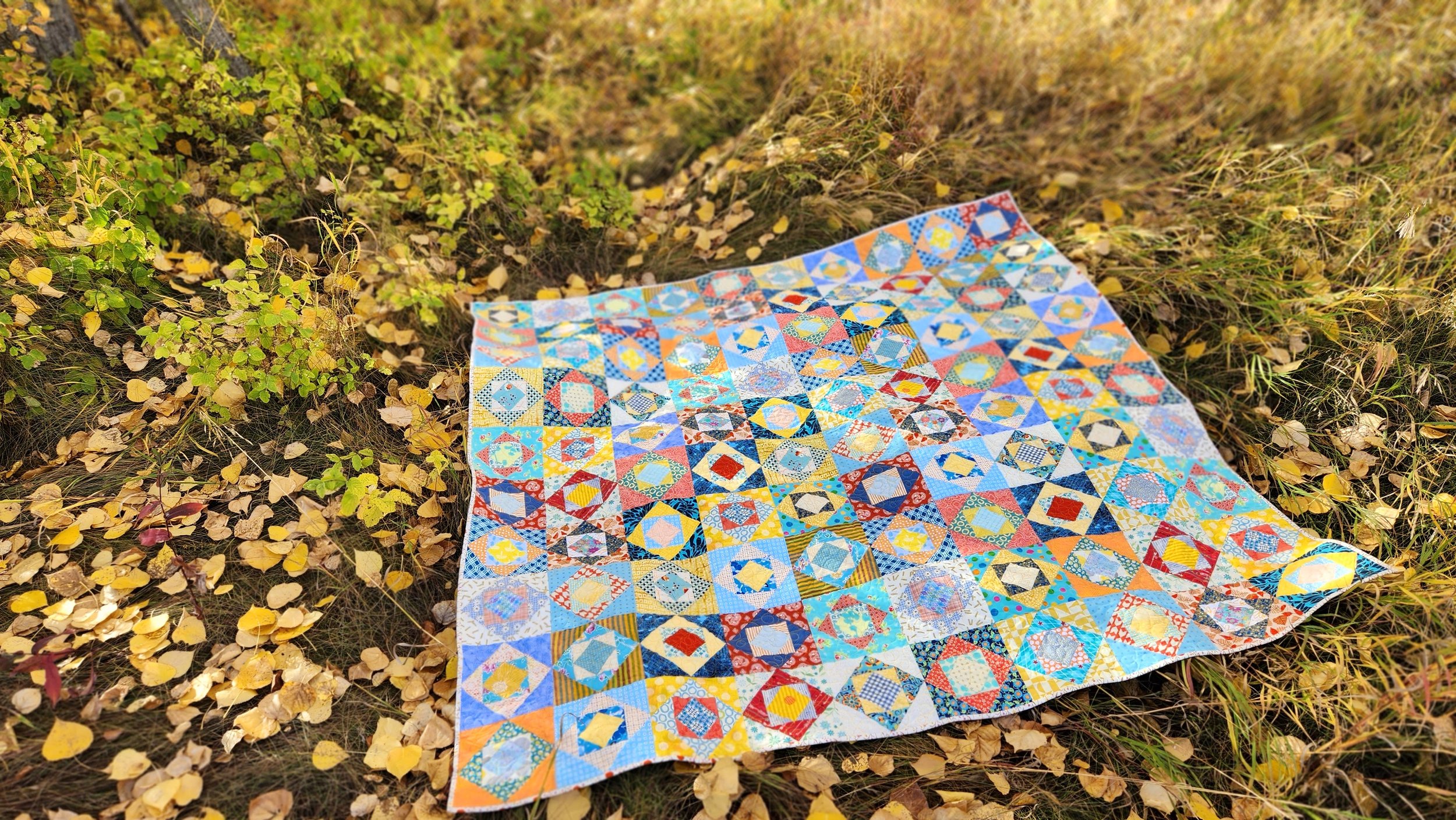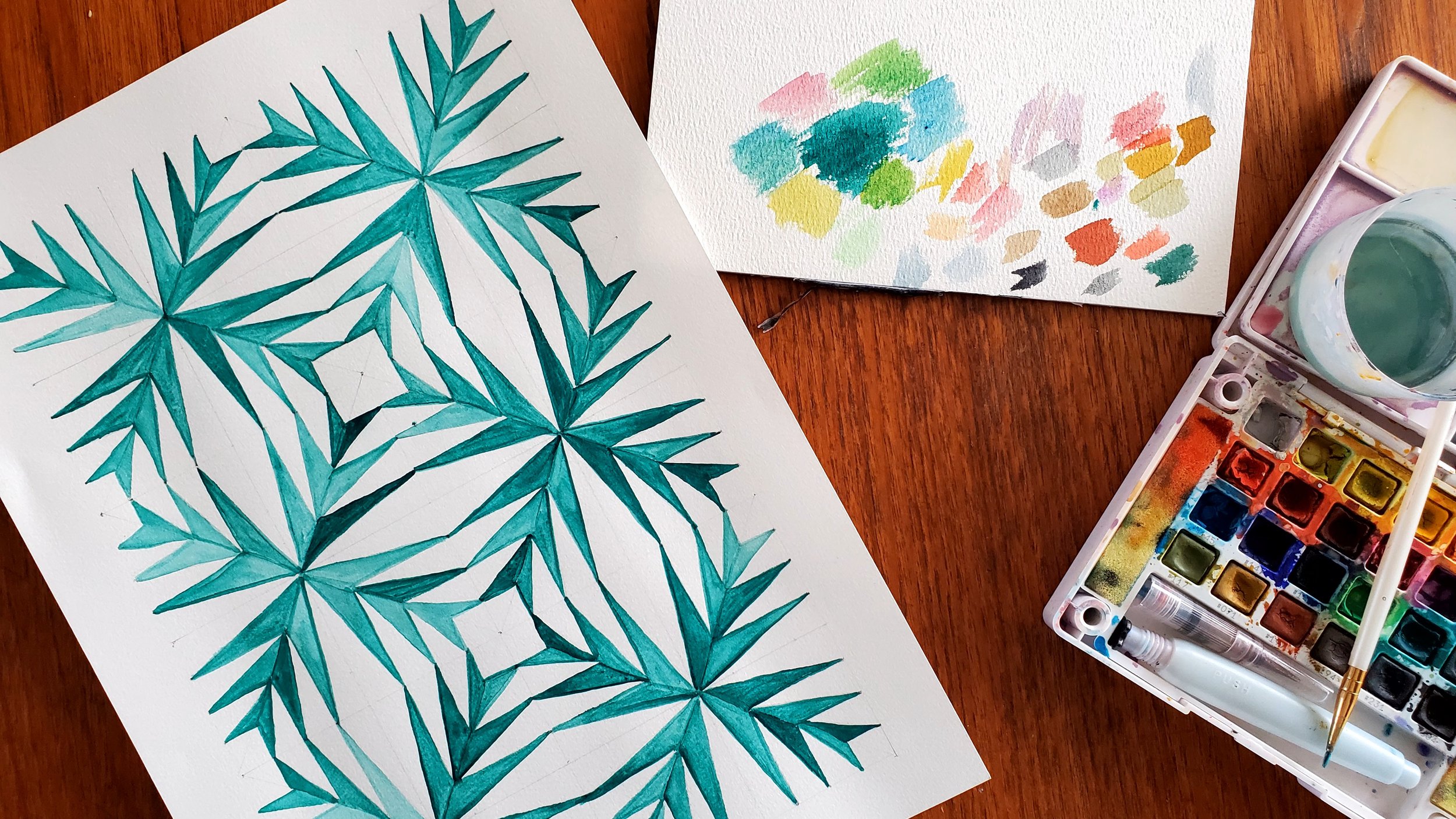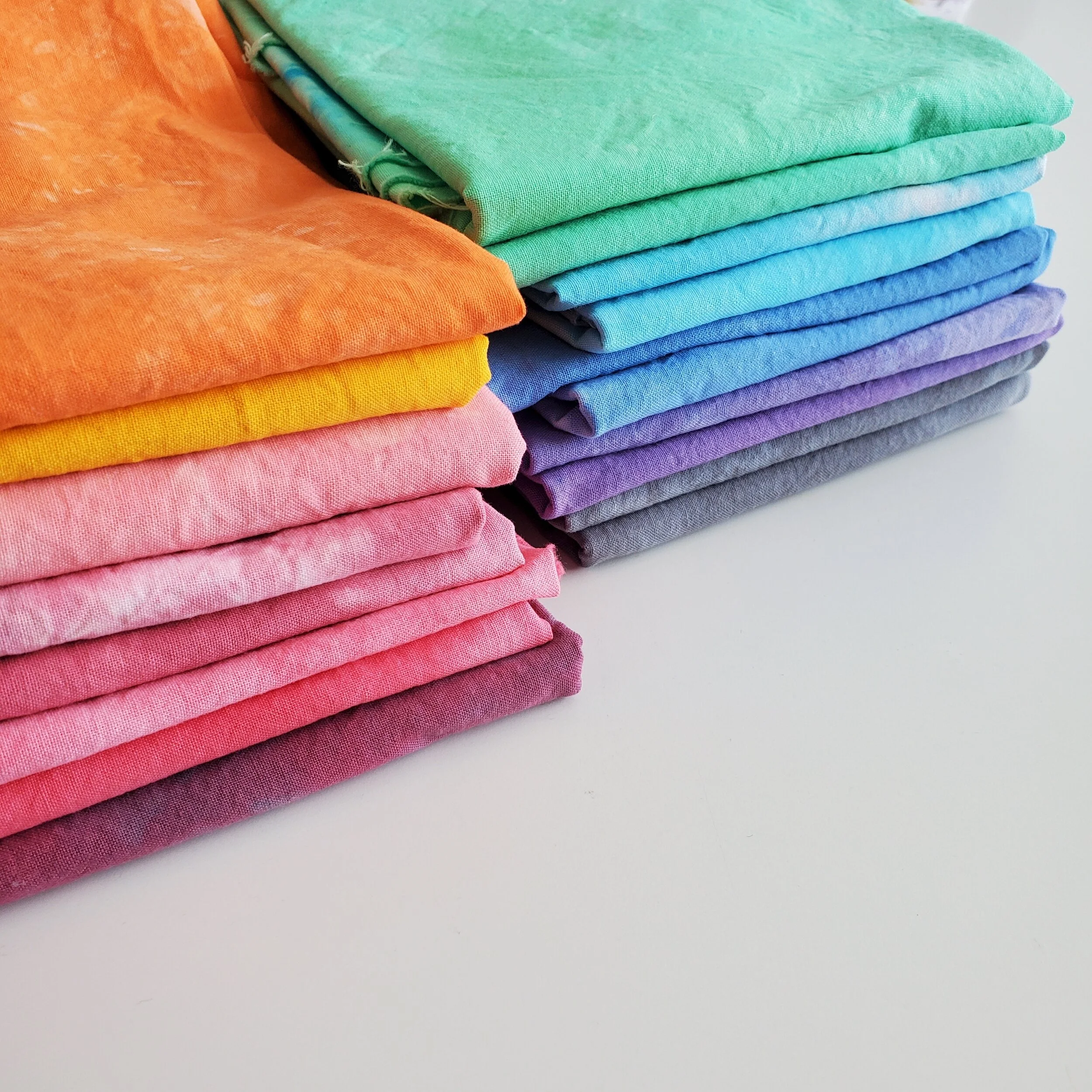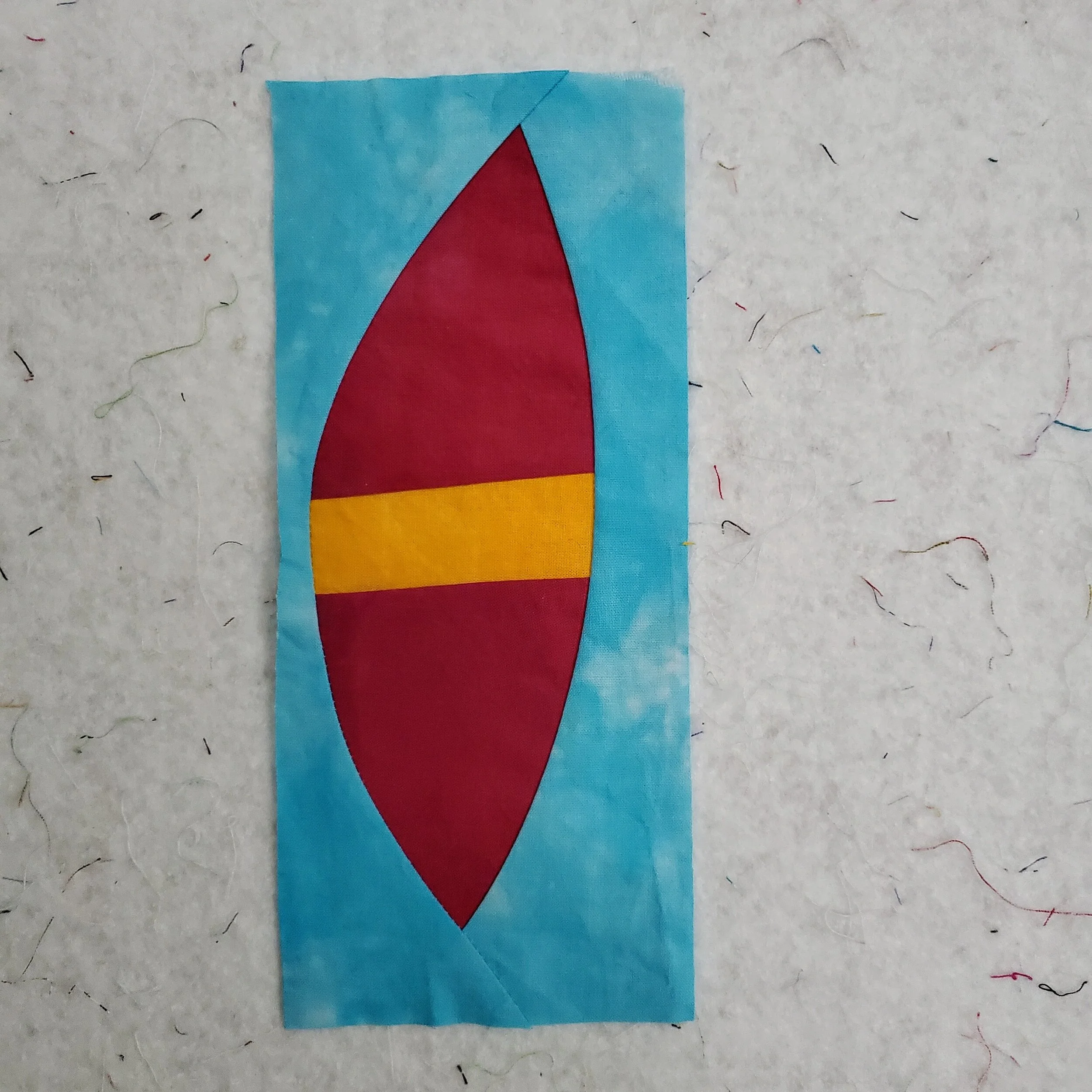Kayleigh
70” x 70”
Along with her friends Ashley, Ashleigh, Brittany, and Angelica, Kayleigh loves her pumpkin spice, wide brim hats, and the sweaters that the cooler weather brings. Or even just the hint of cooler weather. Time to put away the spaghetti straps and flip flops, bring on the boots and oversized turtleneck sweaters. She’s sweet but not all that smart. She’s kind but not all that generous. But she will always open the wine. And she always finishes the book for book club. Who wouldn’t when wool socks and warm quilts keep you company while you read? Kayleigh is fall.
Okay, so my version of a fall quilt is a little less stereotypical than your basic girl hunting for pumpkins. It’s a function of where I am. Here in Calgary we don’t get a lot of the rich reds and oranges of your New England fall. We get gold, so much gold. We get blue skies in late September heat. My fall quilt reflects that.
I didn’t actually set out to make a fall quilt. The whole thing started with an experiment with a square in a square technique. You know, I had to see if it could be done improvisationally. Of course it can! I loved it so much I taught it as an online class - a Quilters’ Playcation Playdate last year. Then the colour combo of blue, yellow, and coral made me so happy I decided to just keep going! On a walk last fall I realized that these indeed were the colours of our fall.
I can hardly believe I actually finished the quilt already. My quilt tops tend to sit for years. Fall is here though. While pumpkin spice is not my thing - unless actually IN a pie - I do enjoy exploring nature as the season changes. So when I had a long arm appointment booked a few weeks ago I made sure to bring this quilt top and give her her due in the right season.
She is quilted with Wonderfil Tutti in a variegated yellow (TU01) with deco bob in the bobbin. I rented time at My Sewing Room on their Bernina long arm. In a little over 2 hours she was quilted! Nothing fancy, just an all over loop de loop design. There is no point going too fancy because you won’t see the stitching on such a busy quilt.
This is a great example of using prints and not being afraid of it! Most people call this look scrappy. It works because I paid attention to both colour and value as I made each set of squares. There are actually 5 of each fabric combination. I made five at a time simply so I could chain piece without getting confused. I would pick the four fabrics I wanted in the blocks, start with a centre square and build out. Each block wanted to finish around 7.5” so I decided to make 100 blocks in total. That meant I need 20 sets of blocks. To keep order with all these fabrics that meant I did 10 sets that went warm-cool-warm-cool, and 10 that went cool-warm-cool-warm. That way, when it came time to laying out the quilt top I could alternate the groupings for an effective layout. I think it worked well!
I also paid attention to value, although not as fastidiously. Some blocks have high value contrasts between each round, some are lower contrast. I like that mix of bold and soft. I did, however, pay more attention to value when laying out the blocks to make the quilt top. The really bold blocks and the really soft spots are spread throughout the quilt, so no one area commands all the attention. This is what I call managing the bossy blocks.
The back is pieced from things in my stash. Nothing fancy.
She is bound with a Heather Ross reprint. I tried a number of different colours and fabric and felt the white was a nice touch. As you probably know, I usually like a high contrast binding but it wasn’t right here. There is just a touch of pink in the print, though, that makes me smile.
Our days haven’t actually cooled off that much, even though the colours are changing. Which means there isn’t a huge need for a fall quilt just yet. She came in handy at a cross country race as a soft place to sit. And the evenings are getting longer and a bit colder. If I sit by the window I definitely need a quilt. Besides, pumpkin spice is already at the coffee shop so it definitely means fall.



















